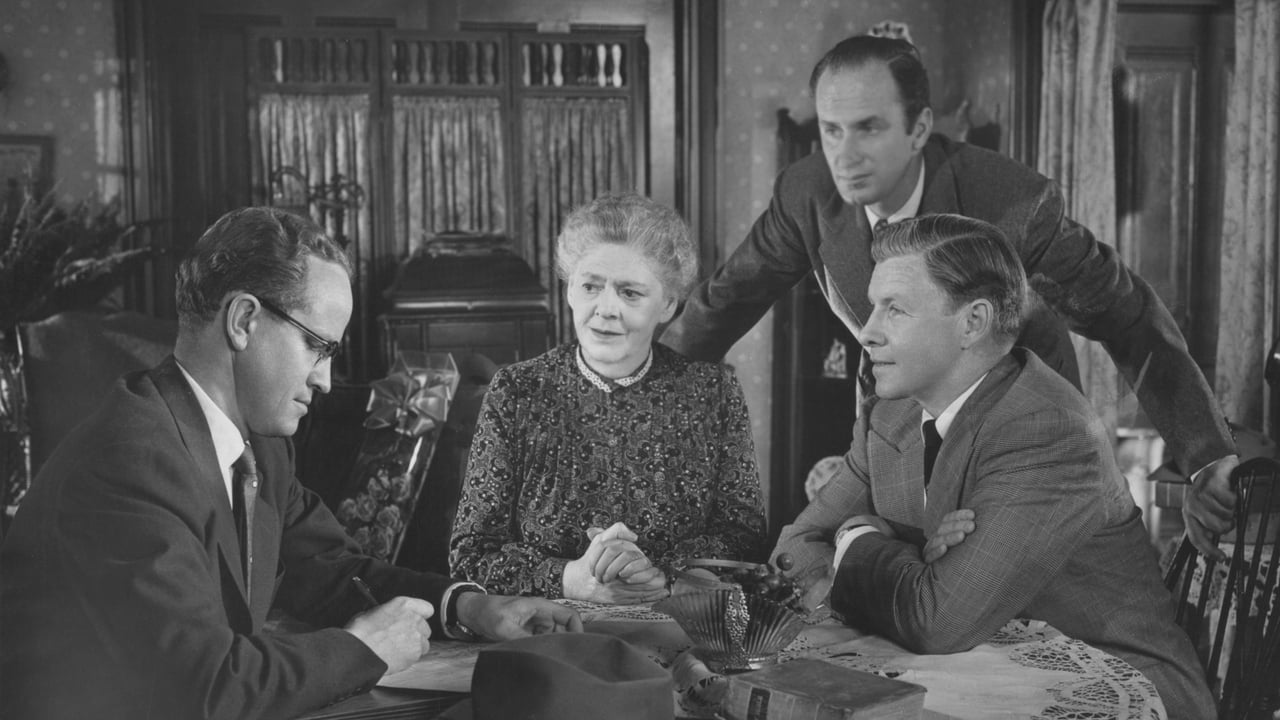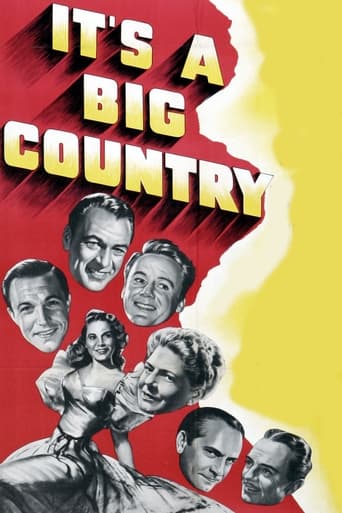

The movie's neither hopeful in contrived ways, nor hopeless in different contrived ways. Somehow it manages to be wonderful
... View MoreThe movie's not perfect, but it sticks the landing of its message. It was engaging - thrilling at times - and I personally thought it was a great time.
... View MoreIt is neither dumb nor smart enough to be fun, and spends way too much time with its boring human characters.
... View MoreThe movie's not perfect, but it sticks the landing of its message. It was engaging - thrilling at times - and I personally thought it was a great time.
... View MoreSociologists would have a ball with this 1952 anthology film describing the different facets of American life- it's various forms of culture whether they be religious, social, political, etc.The anthology is made up of 8 straight stories,vignettes, if you don't know and has quite an array of movie talent in the film which is narrated by Louis Calhern.Even Nancy Davis shows up as a prim and proper schoolteacher who runs into conflict with a student's father when she tells him to have his son's eyes checked for glasses.Gary Cooper salutes Texas and there is an effective display of contributions of African Americans. Ethel Barrymore is upset in her story that she wasn't counted in the census and S.Z. Sakall portrays a bigot against Greeks whose daughter, Janet Leigh, quickly weds Greek Gene Kelly.The problem with the film is that each segment only lasts for about 20 minutes or so and therefore there is little time for character development. Marjorie Main steals her vignette as the mother of a dead Korean War soldier who gets a visit from Keith Brasselle, a fellow serviceman, who reads a letter that his friend sent just before his death. This was poignant, but too brief as well.The film depicts various forms of Americana.
... View More"It's a Big Country" is a significant film. Created only a few years after the victorious effort of WWII, it was delivered to an American public that was exercising newfound powers, economic and political. It was a society undergoing rapid change for the same reasons and also due to changing mores in gender and race relations (caused by war experiences) and due to changes in technology and infrastructure (the car, interstate highways, etc.). The film fairly pleads for factions of the country to remain united despite their tendency to seek their own identities.This film feels like a moving representation of Norman Rockwell paintings, displaying a homespun, good-natured respect for traditions and the values that drove the United States to become successful. From the viewpoint of the 21st century, some of these values seem naïve. In our post-Watergate world, fewer Americans see government authority and other established authorities as innately benign. But it is simplistically easy to view this film as merely propaganda or naïve.Most of the episodes in this collection of vignettes champion values that were and are important to embrace: Racial understanding. The American melting pot. The Constitutional freedoms. But reading some reviews of the film, it is clear that some viewers also see the film as a documentary on American exceptionalism. And it's a subtext that cannot be ignored. Various individuals have always promoted the idea that America is the greatest country that ever existed--teachers, politicians, the military, the clergy. The thing that is exceptional and unique about the U.S. is its Constitution. Sometimes that message is lost in the nationalistic clamor.The film has an exceptional cast (Frederic March continues to amaze), exceptional writing that stirs the heart and summons tears, and solid production values. For those of any age, it can serve as a marker designating the state of the country circa 1950. So many complex factors have affected the evolution of the U.S. from what it was to what it is now. I like being reminded of the optimism of that time, however naïve. And it can remind us of the values we need to preserve and the viewpoints we have thankfully left behind.
... View MoreCollection of stories to show the melting pot aspect of the USA. The film is blessed with an array of talent that only could be pulled together in Hollywood at its peak. Episodic by nature and all the vignettes have their charm but the first three are really the best.William Powell and James Whitmore breeze their way through a lively discussion of the ever evolving nature of the country. Their reactions to each other are what makes the skit.Next up is a little story about not being lost in the crowd made charming by Ethel Barrymore's gentle performance. The next segment is a tribute to notable African Americans which is nice in and of itself but that's also why it's a bit problematic. Considering the time it was made the isolated state of the short would have made it easy to snip out in the South. Of course the same could be said for any of the stories but since their are not people of color in any of the other segments it's rather obvious that was the intention at the time. Still it's a nice opportunity to see the significant Americans it spotlights.The other sections all showing various slices of life, aside from Gary Cooper's star bit simply representing Texas, are pleasant but are on the sticky side of sweet.
... View MoreAnyone who aspires to those things which have made America the greatest nation the world has known should own this film and watch it often.A who's who of Hollywood in the period 1930 thru 1951, this wonderful telling of America's greatness shows a time when the liberal media was in check and Americans were taught to be PROUD of what we have built. A far cry from the liberal propaganda that is spewed on your 6pm "news" today.Watch the opening interaction between Spencer Tracy and William Powell. If Powell's oratory does not move you to want to see the rest of this outstanding piece of American film history, you might as well book a one-way ticket to another country. Maybe you'd be happier there.A wonderful film of America, for Americans. Easily 10 of 10.
... View More